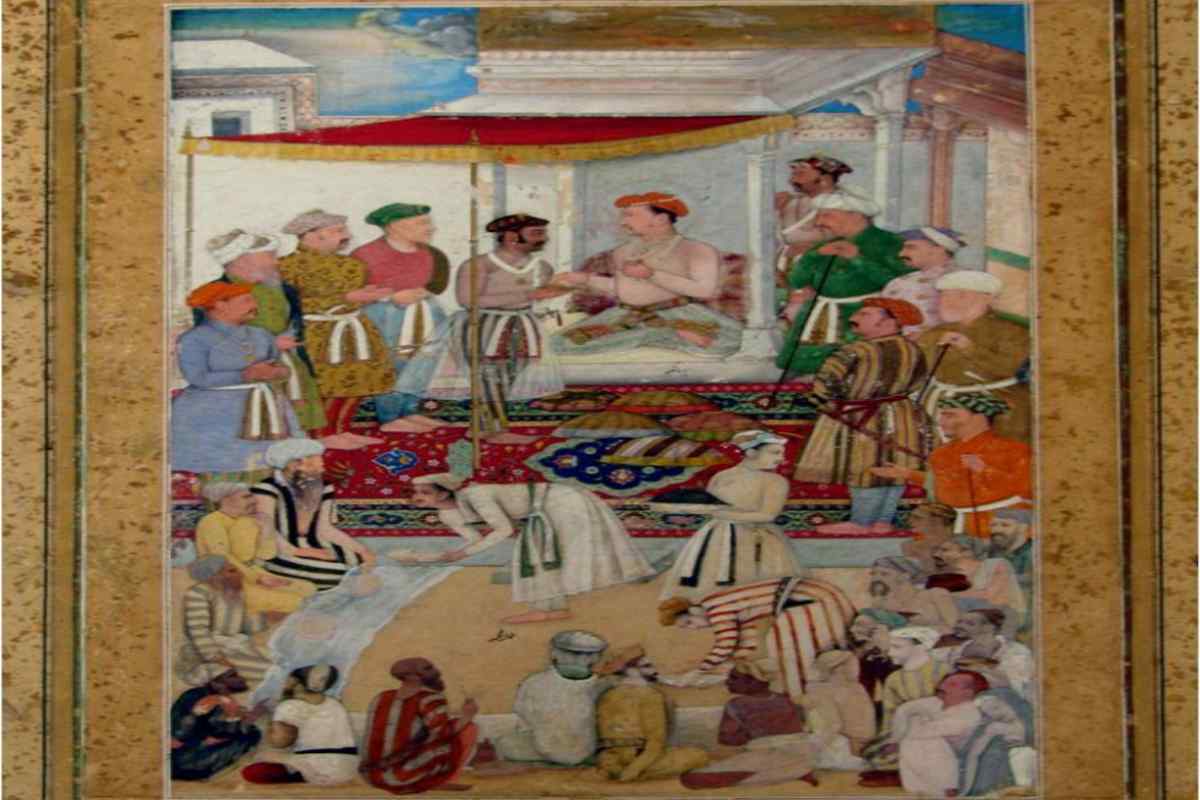The Rampur Raza Library is a treasure trove of art and culture, thanks to the Rampur State Nawabs. They devoted themselves to ensuring that the gallery has a treasure trove of miniature paintings for future generations and carry Persian influences, as well as different forms of Indian styles. Among the works in this collection the one which particularly should be mentioned is an exquisite miniature painted in the time of Jahangir’s reign – a perfect example of the Mughal School.
Rampur Raza Library Have Captivating Miniature
This perfect piece of art iteration is made on a handicraft paper board called (WASLI) sheet having a golden look that increases its beauty. This painting is painted by a brilliant artist namely Fatehchand and the major uses of colours are reds, blues and gold on the pile work on fabric draperies and carpets. The birds eye view characteristic of Mughal painting reveals an embedded story in a large courtyard close to the dargah of Hazrat Moinuddin Chisti, a sufi saint.
Rampur Raza Library Have Also An Atmosphere of Generosity
When Jahangir interacts with his citizens, the painting depicts the essence of care and closeness to the community. Circumventing more than thirty people in loosely fitting happy colors, the demeanor of the people in the picture looks like straightforward esteem and thankfulness. The dastarkhwan – which consists primarily of delicious saffron biryani – symbolizes the hard work symbolizing the royal kitchen while following a tradition set by Akbar. Originally the huge cooking pots at the Dargah of Hazrat Moinuddin Chisti were installed by him and later improved by Jahangir so that enough food could be prepared for the many visitors.
A certain conviviality is created by the man where Jahangir being a king and influential can also relate to his people by sharing with them. The idea of the four doors is that the langar goes on until all the people have been served a meal in the true tradition of the Gharib Nawaz or the “Benefactor of the Poor”. This miniature encompasses the cultures of Jahangir’s rule and also warns future generations of love, tolerance and generosity of India.
For detailed story, please visit: Awaz the voice
Also Read: Maha Kumbh Mela: A Grand Festival of Faith and Unity
You can connect with DNN24 on Facebook, Twitter, and Instagram and subscribe to our YouTube channel.

